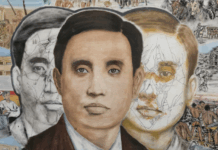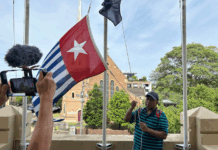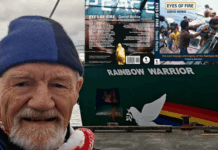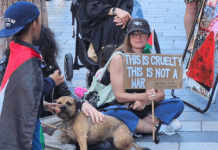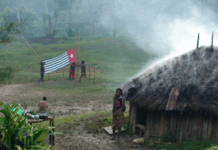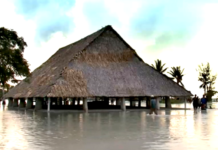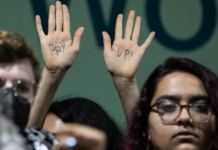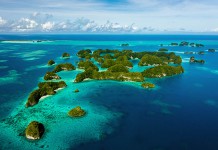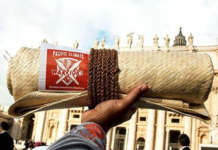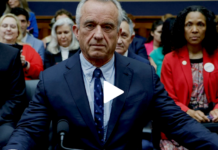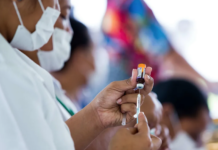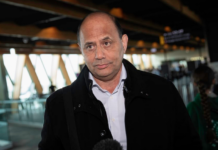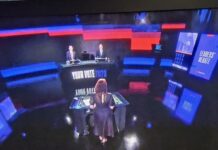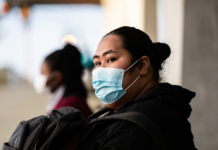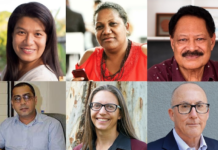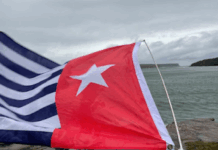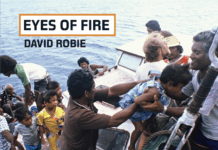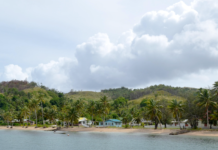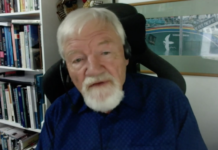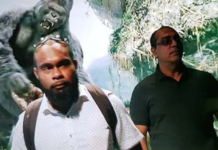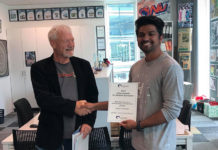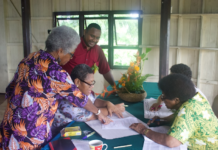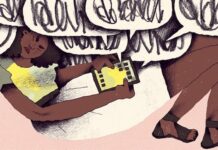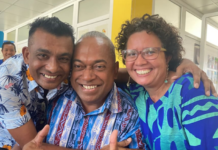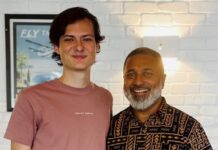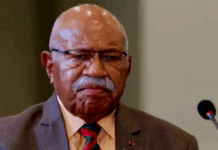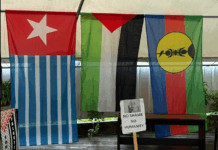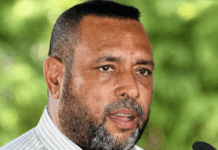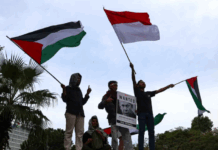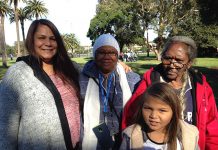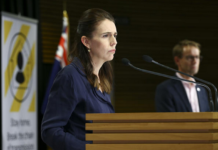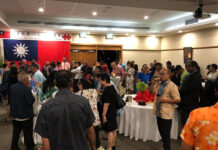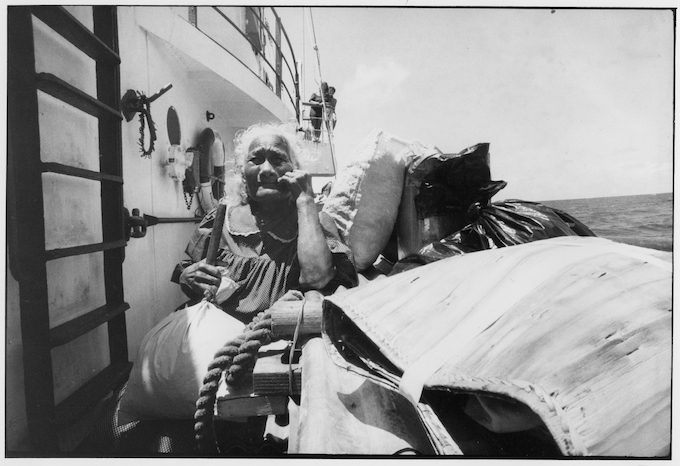
By Aui’a Vaimaila Leatinu’u of PMN News
I didn’t know much about the surrounding context of the infamous Rainbow Warrior bombing 40 years ago on Thursday. All I knew was that we, as a country, have not forgotten.
I was born in 1996, and although I didn’t know much about the vessel’s bombing, which galvanised anti-nuclear sentiment across Aotearoa further, the basics were common knowledge growing up.
So, when I got the opportunity to read the Eyes of Fire: The Last Voyage and Legacy of the Rainbow Warrior (40th Anniversary edition) by veteran journalist David Robie, who was on board the ship during its mission to the Marshall Islands, I dove in.
On 10 July 1985, French secret agents destroyed the Rainbow Warrior at Marsden Wharf in Auckland, killing Portuguese-born Greenpeace photographer Fernando Pereira and sparking global outrage.
The Rainbow Warrior protested nuclear weapons testing in the Pacific, specifically targeting French atmospheric and underground nuclear tests at Moruroa and Fangataufa atolls.
Their efforts drew international attention to the environmental devastation and human suffering caused by decades of radioactive fallout.
There’s plenty to learn from this book in terms of the facts, but what I took away from it most is its continued relevance since its original publication in 1986.
The opening prologue is former New Zealand Prime Minister Helen Clark’s reflection on the Warrior’s bombing, Pereira’s death and the current socio-political climate of today in relation to back then.
Clark makes remarks on AUKUS, nuclear weapons and geopolitical pressures, describing it all as “storm clouds gathering again”.

Nuclear fallout
It has been a tumultuous period for the Pacific region in the political realm, between being at the mercy of a tug-of-war between global superpowers and the impending finality of climate change to the livelihoods of many.
With EOF’s 40th Anniversary edition, it is yet another documentation of these turbulent times for the Pacific, which have never really stopped since colonial powers first made contact.
Between 1946 and 1958, the United States conducted 67 atmospheric and underwater tests in the Marshall Islands. Then, in 1966, the French launched 46 atmospheric tests between 1966 and 1974, followed by 147 underground bombs from 1975 to 1996 after widespread international protest and scrutiny.
Specifically, the US 1954 Castle Bravo nuclear test, the largest atmospheric hydrogen bomb test, resulted in the fallout’s ash coating Rongelap Atoll. Though the US evacuated residents days later, they returned them in 1957, leaving them to suffer from health effects like miscarriages, cancer, and birth deformities.
Eventually, the Rainbow Warrior helped evacuate the Rongelap people in 1985 over several trips, where the locals packed down their homes and brought them onboard.
Throughout history to today, there’s a theme of constant disregard and dehumanisation of my people by the West.
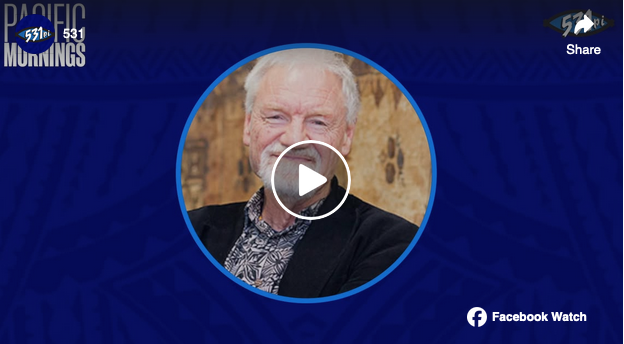
When does it stop?
A decade prior to the Rongelap evacuation, the infamous Dawn Raids occurred, where it wasn’t until 1986 that a Race Relations investigation found Pacific people comprised roughly a third of overstayers yet represented 86 per cent of all prosecutions.
The 506-day Bastion Point protest also occurred between 1977 and 1978, where Ngāti Whātua, led by Joe Hawke, pushed back against a proposed Crown sale of that land.
In the end, around 500 NZ police and army forcefully evicted the peaceful protestors.
So, while this was all happening, the Pacific, specifically the Marshall Islands and French Polynesia region, were reeling from the decades of nuclear testing and consequential sickness, pain and death.
Today, the Pacific is stuck between geopolitical egos, the fear of being used as a resource stepping stone, internal struggles, economic destabilisation and pleas for climate change to be made a priority not to save sinking islands but the world.
Amid this “political football”, it constantly feels like Pacific and Māori end up being the ball.
Robie’s book tells heartfelt moments with its facts, which helps connect to its story at a deeper level beyond sharing genealogy with the people involved.
Voices within it don’t hold back their urgency or outrage towards what happened, especially how that past negligence by bodies of power continues today.
When I read books like EOF 40th, whether it’s about my tangata Māori or Tagata Moana, I often close them and wonder: When do we get a break? When does it stop?
I wish I had an answer, but I don’t. At least we will always have answers on what happened to the Rainbow Warrior and why.
No matter what, it is indisputable that an informed generation will navigate the future better than their predecessors, and with EOF 40th, they’ll be well-equipped.
Republished from PMN News with permission.
- Eyes of Fire: The Last Voyage and Legacy of the Rainbow Warrior, by David Robie (Little Island Press)


